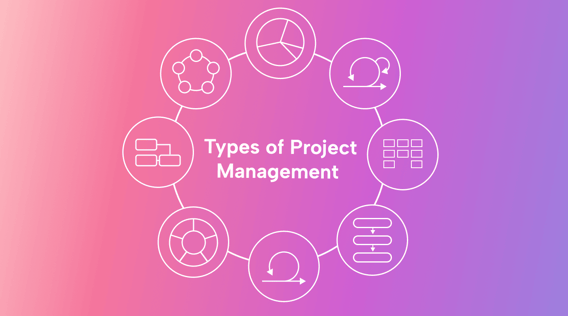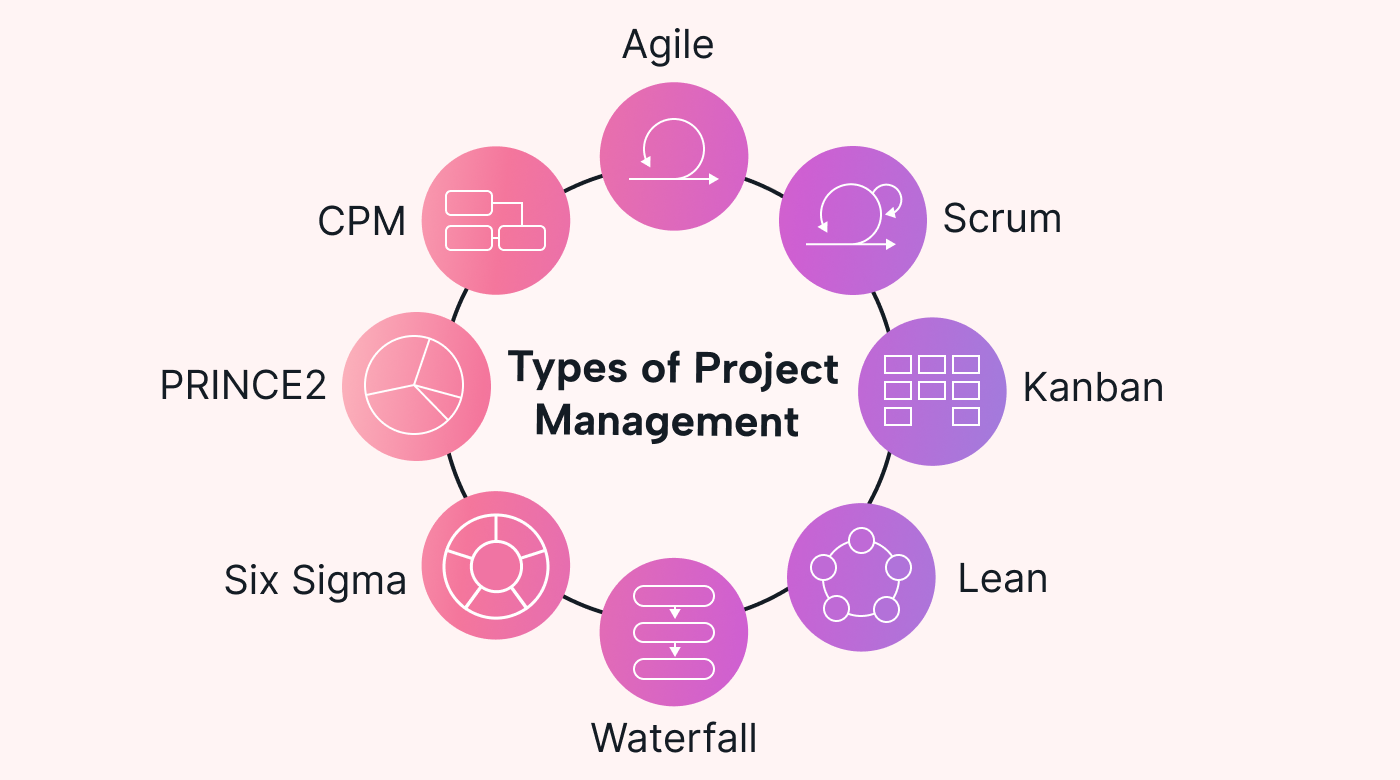Choosing the right type of project management for your business can be challenging, especially when there are so many rapidly evolving approaches. How can you bring in a new work style when you’re already mid-project?
We get it. You’re busy. But, in our on-demand economy, clients expect rapid turnaround times. They want the ability to make changes on the fly. Gone are the days of winging project management.
KPMG’s 2022 Project Management Survey found that only 7% of surveyed businesses weren’t using any formal project management methodology. If you’re one of these businesses, you’re likely making your work harder than it has to be.
In this article, we’ll cover:
- What project management is.
- What project methodologies are and how they differ by industry.
- What the five types of project management methodology are (including their frameworks), and how to choose one for your business.
What is project management?
Project management is the art of guiding a team to achieve specific goals within a set timeframe. It involves planning, organizing, and coordinating people and tasks. Project management keeps projects on track and makes sure they're completed successfully. From initiation to closure, project managers oversee the entire process. It’s their job to keep everyone on track and help them work together.
What is the project management lifecycle?
The project management lifecycle is a framework with five phases: initiating, planning, executing, controlling, and closing a project. These phases are also different depending on the methodology you choose.
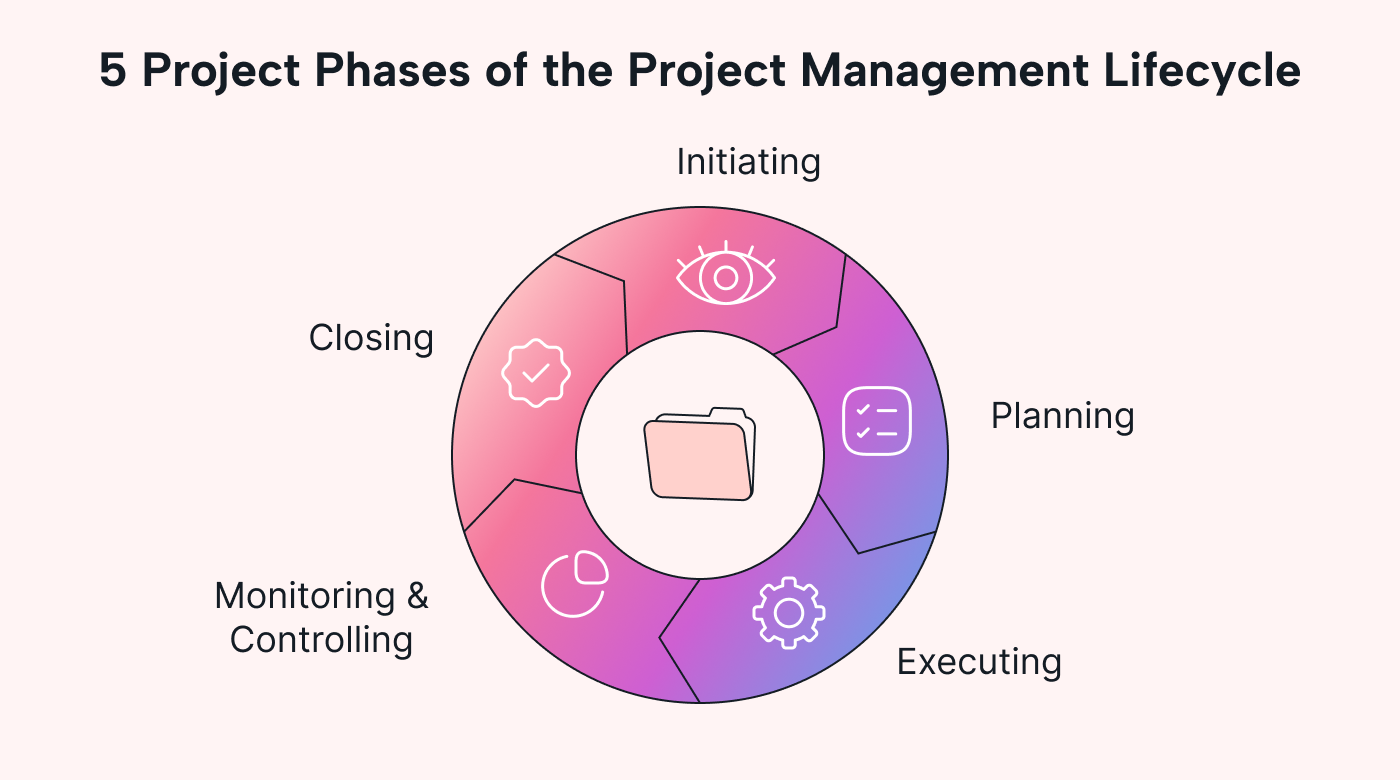 |
What are project management methodologies?
Project management methodologies are structured approaches and frameworks for managing projects. You might have heard of Agile, waterfall, and lean. These methodologies are used to see projects through to successful completion.
Salesforce’s 2023 ‘State of the Connected Customer Report’ shows that 88% of customers say the company’s experience is as important as its product or services. You need a proven framework that consistently produces great results.
What can project management methodologies do?
Project management methodologies have many advantages. Firstly, they help make things more efficient by simplifying work processes. They boost productivity by giving project teams a framework to work within. They also foster collaboration and simplicity.
Planning and organizing tasks carefully helps to ensure projects are completed on time. Effective project management also encourages clear communication between team members and clients. They promote teamwork and help reduce misunderstandings. This improved communication leads to better project results.
These methodologies also include strategies to identify and handle risks. By preparing contingency plans for potential issues, projects can achieve successful outcomes.
What can’t project management methodologies do?
Project management methodologies offer structure and guidance for managing projects effectively. However, it’s important to understand their limitations. Firstly, these methodologies cannot replace the expertise and skills of the team members involved in the project. While they provide a roadmap for success, your team's knowledge, experience, and creativity deliver quality results.
Project management methodologies can't shield projects from external factors such as market changes and economic conditions. Even if you follow a methodology perfectly, unforeseen circumstances can impact project progress. Remain adaptable and prepared to make adjustments to keep your projects on track.
Remember, project management methodologies can't guarantee project outcomes. They increase your chances of success by creating consistency in your team. They also create best practices to follow. But there are always risks and uncertainties involved. Unforeseen challenges, resource constraints, and changes in project scope can influence the final results.
How many types of project management methodology are there?
We’ll explore seven methodologies and tools that you can try in your business.
You may already be doing some of these things in your business purely by your working method. Some may feel familiar, and others are entirely new to you. The important thing here is to find the approach that works for you. After all, it’s not about perfectly adopting a textbook version of a project management methodology but striking a balance between structure, flexibility, and consistency to create reliable client outcomes.
Traditional waterfall project management
Waterfall methodology is a project management approach that follows a sequential and linear process. It is a traditional approach that looks like a waterfall flowing in one direction when visually mapped. In this method, each project phase is completed before the next begins.
The process starts with requirements gathering and requirements planning. This is followed by design. Then development or implementation. Testing and, finally, deployment. There is an ongoing maintenance phase once the project is completed (or deployed).
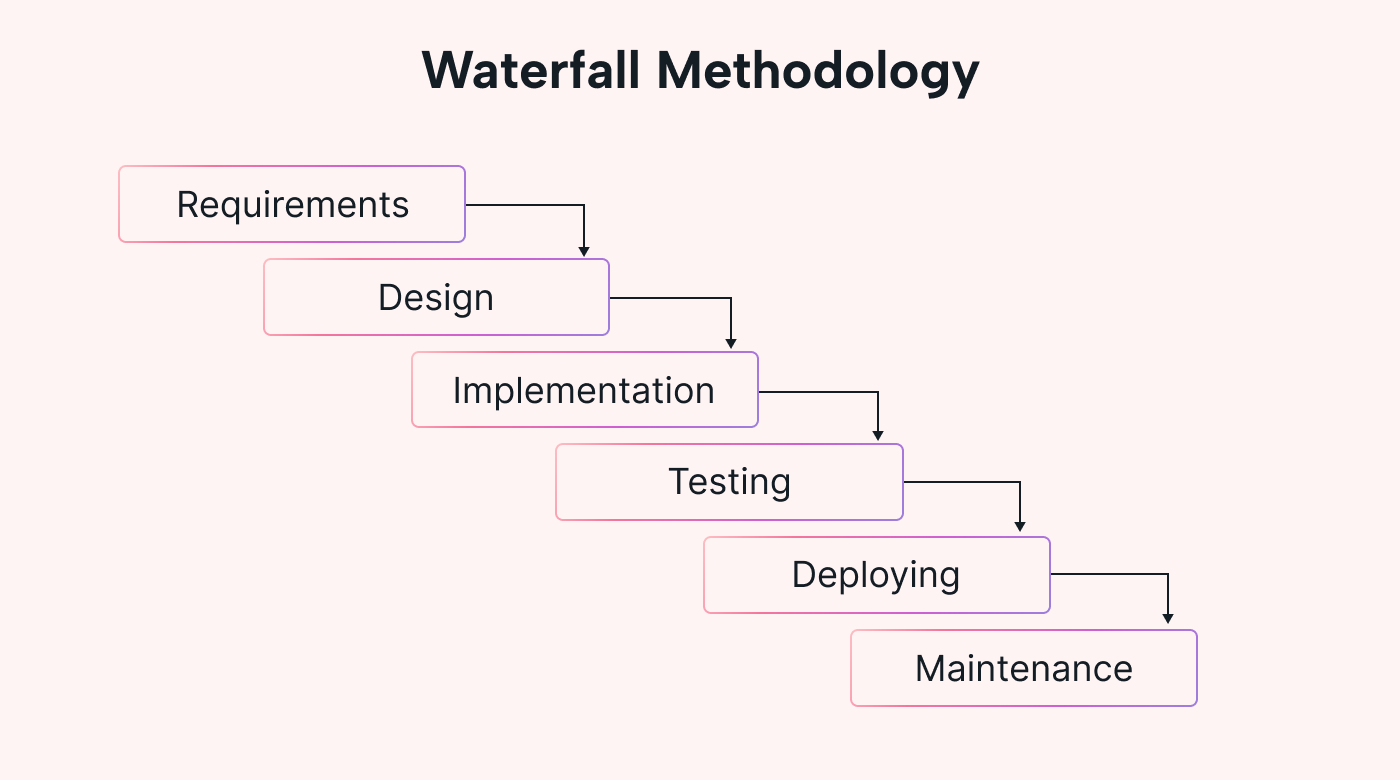 |
The advantage of waterfall is its simplicity and clear structure. It works well for projects with well-defined requirements and little likelihood of changes. However, it can be challenging if requirements change or if there is a need for regular customer feedback. For example, if you’re creating software with little external input, such as a brand new mobile app, waterfall might be helpful as you complete each process step. But if you are building an app for a client, regular feedback will be required, development cycles will be short and quick, and many changes may need to be factored in. In this case, an Agile approach might be best.
Before diving into Agile, here are some of the benefits of waterfall.
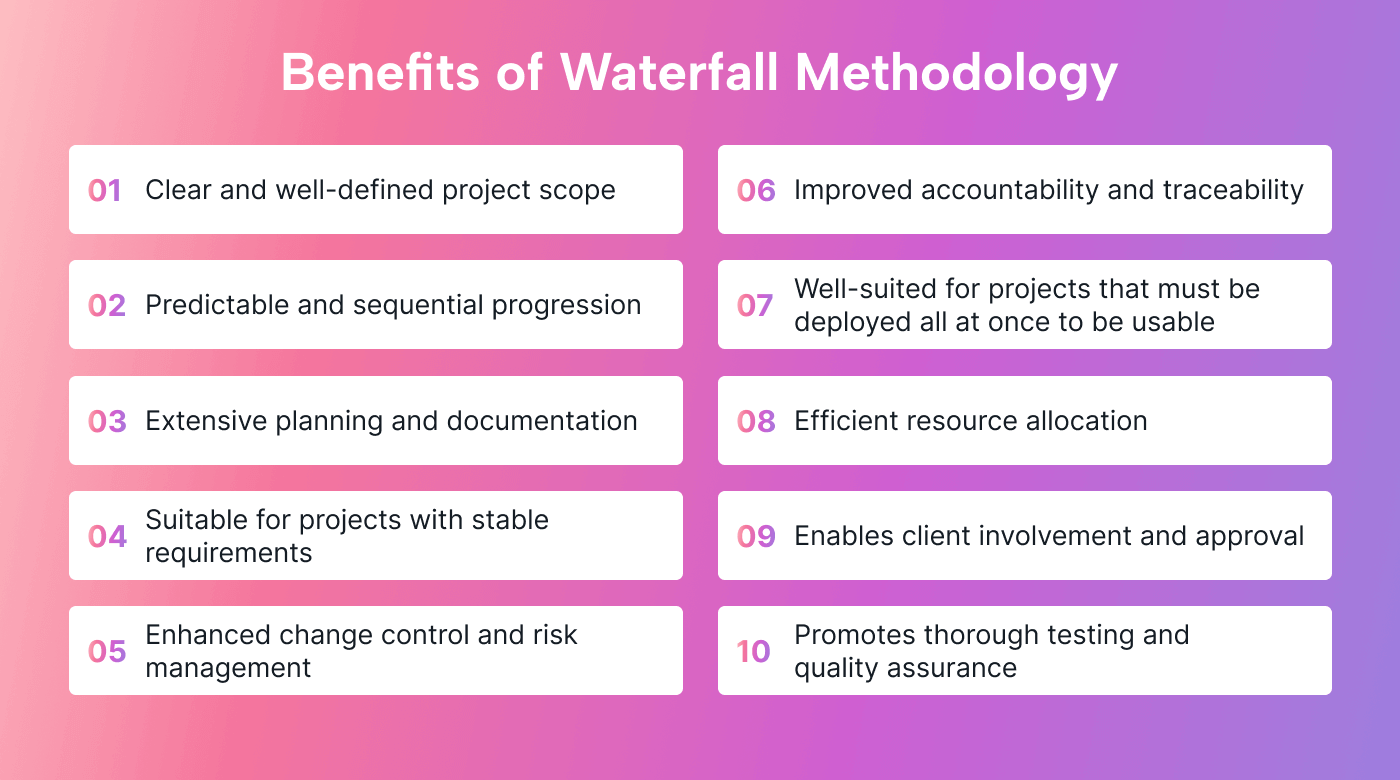 |
Waterfall is like a clear, well-defined roadmap for project execution best suited to complex, sequential projects.
Read more: Waterfall vs. Agile: Which Method Works Best for Your Project?
Agile project management
Agile project management is a flexible and collaborative approach to managing projects. Unlike the sequential nature of the waterfall methodology, Agile focuses on adaptability and continuous improvement.
In Agile, projects are divided into smaller parts called iterations or sprints. Each sprint typically lasts a few weeks and involves a cross-functional team working together. The team breaks down the projects into smaller tasks and sets goals for each sprint.
Agile is celebrated for its ability to adapt to change mid-project. In fact, in a 2022 study by KPMG, 71% of respondents who adopted Agile methodologies felt that it improved overall project delivery.
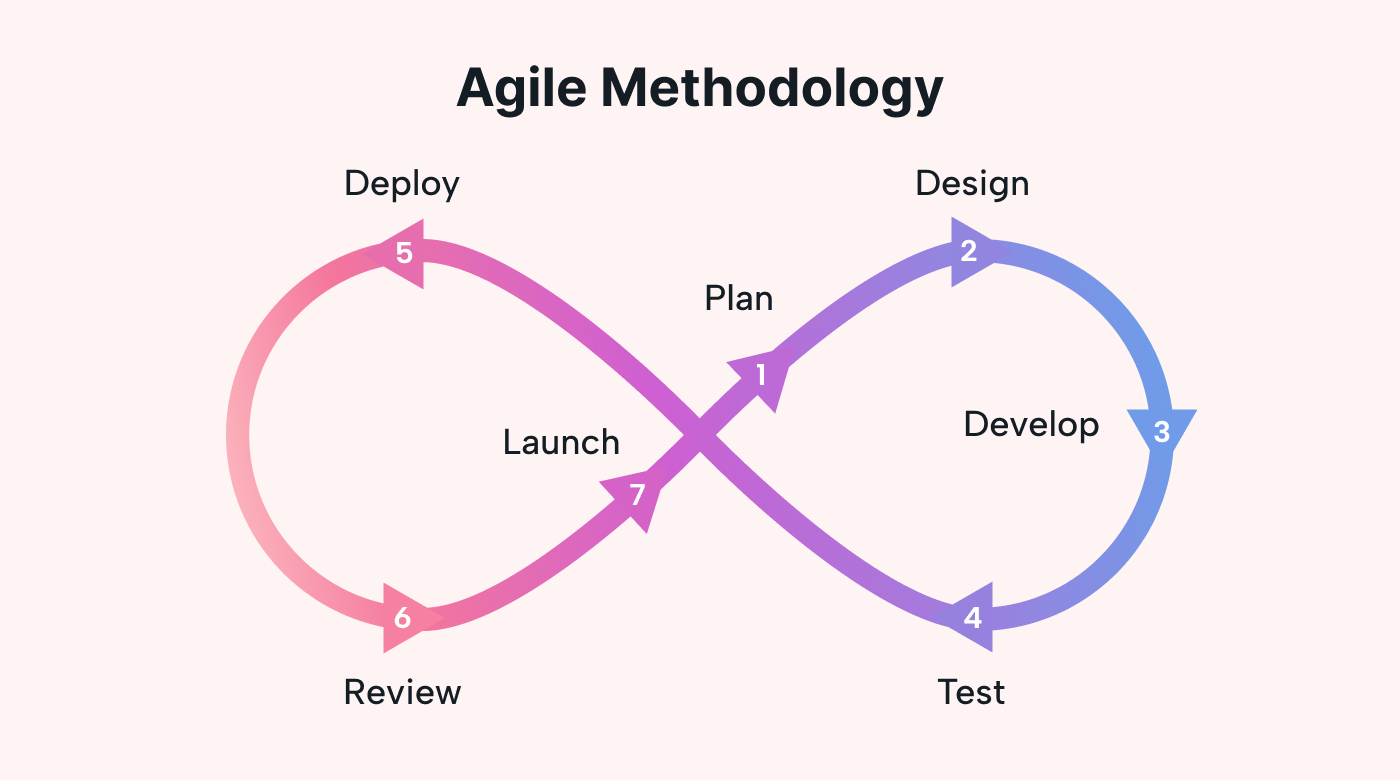 |
Just like waterfall, Agile has phases. Agile focuses on a process of continuous feedback and incremental growth. Features are developed, tested, deployed, and reviewed in a continuous flow.
Scrum
Scrum is an Agile framework that is based on teamwork, collaboration, and adaptability. In Scrum, projects are divided into sprints that usually last 1-4 weeks. There is a specific structure to a Scrum team. Team members are assigned roles. These include Scrum Master, the product owner, and the development team.
Scrum has five ceremonies that include sprint planning, daily Scrums, sprint review meetings, sprint retrospectives, and backlog refinement.
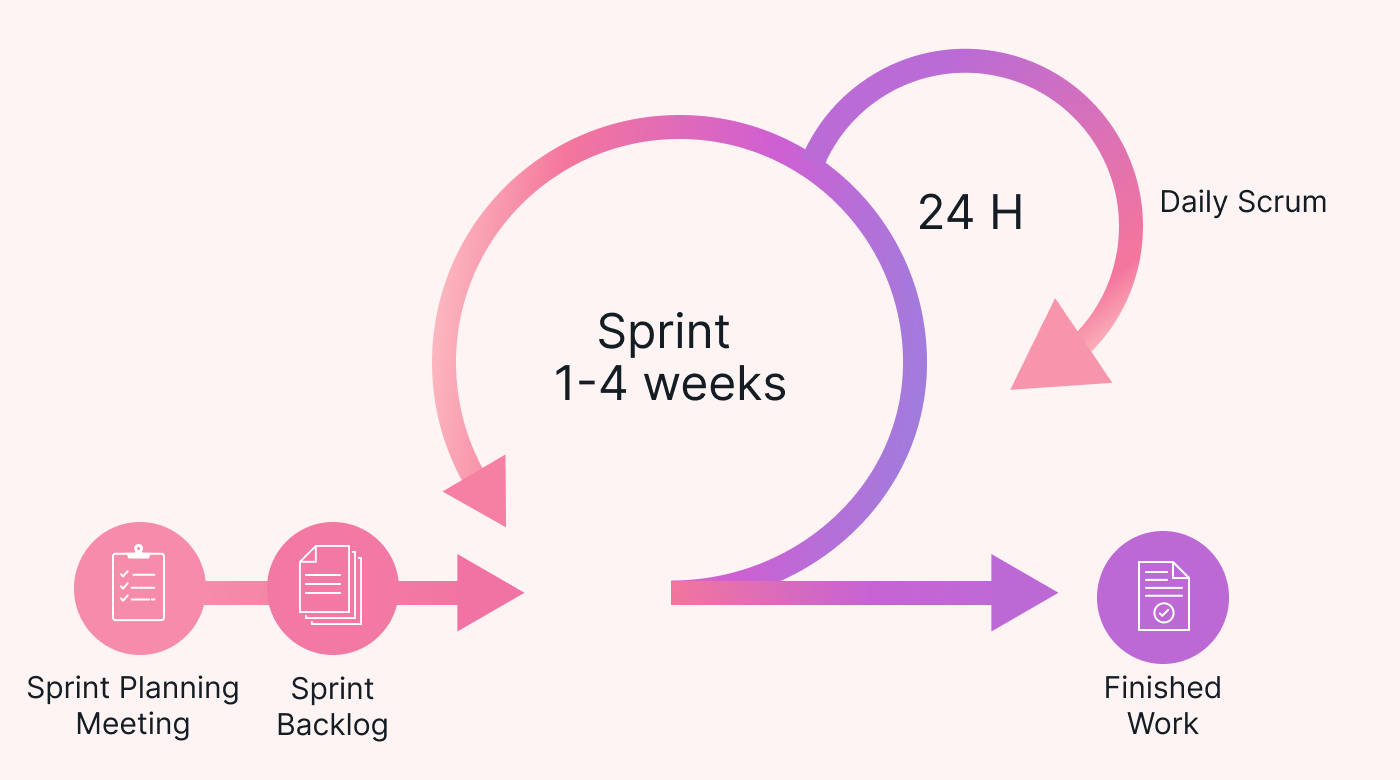 |
This cycle of meetings, or ceremonies, provides opportunities for regular feedback and communication within the team and with clients. This allows for quick adjustments and ensures the project is aligned with the desired outcomes.
Scrum welcomes change and encourages teams to be flexible when responding to new requirements or insights. It promotes transparency, collaboration, and delivering value in increments.
Kanban
Kanban is another Agile framework, but unlike Scrum, which focuses on incremental value, Kanban is all about improving service delivery. Kanban is also a visual framework, utilizing a board to track task progress and status.
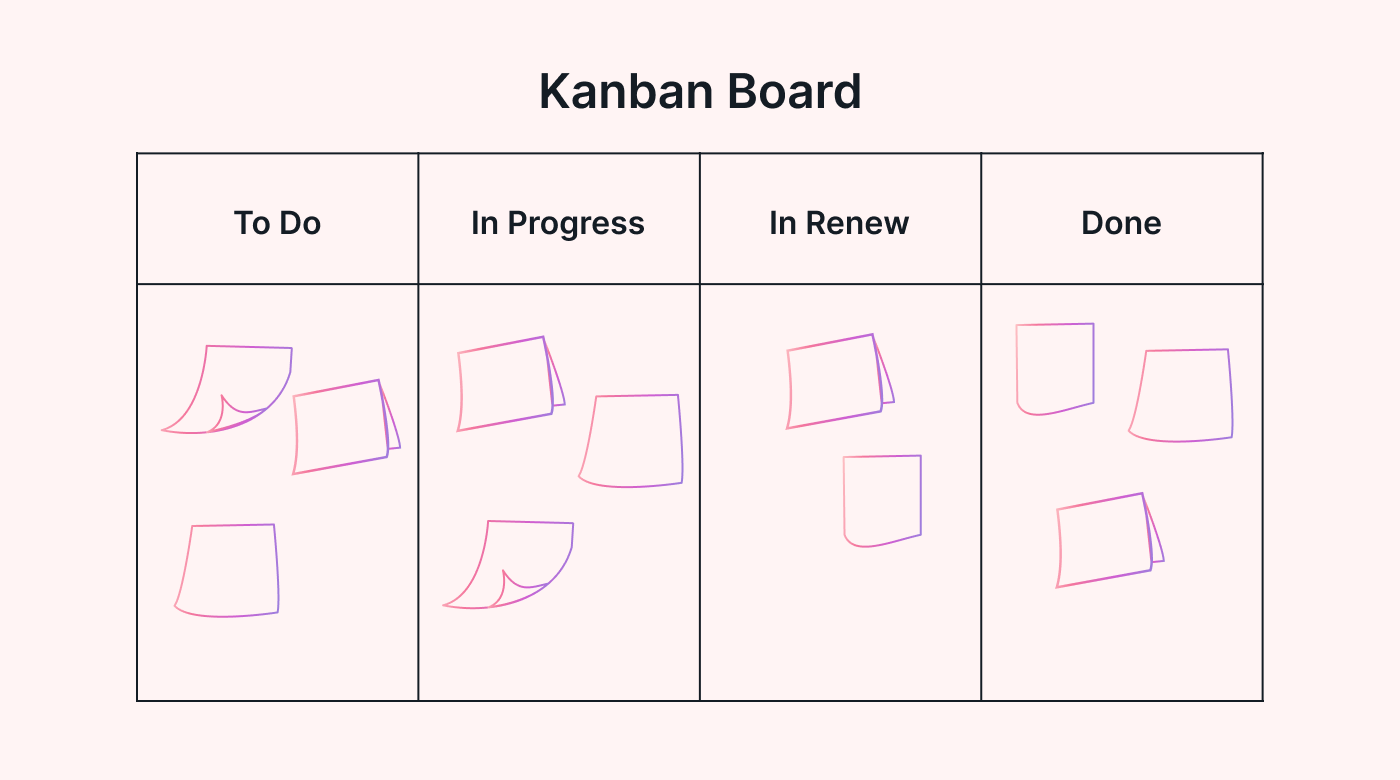 |
The Kanban board has columns representing different stages of work, such as “To Do,” “In Progress,” and “Done.” Tasks are represented as cards and are moved across the board as progress is made. Kanban emphasizes limiting the amount of work in progress to increase efficiency. It helps teams visualize their workflow, identify bottlenecks, and prioritize tasks.
The focus is on continuous flow and improvement. Kanban promotes collaboration and transparency by keeping status visually updated.
Compare Kanban vs. Scrum: Which Agile Methodology is Right for Your Team
Lean
The lean methodology aims to eliminate waste and maximize value in processes. It is also considered an Agile framework that originated from the Toyota Production System, and is focused on efficiency and continuous improvement.
Lean emphasizes identifying and removing activities that do not add value to the final product or service. It promotes streamlining workflows, reducing unnecessary steps, and improving quality. Lean also encourages employee involvement using five principles to enhance workflows.
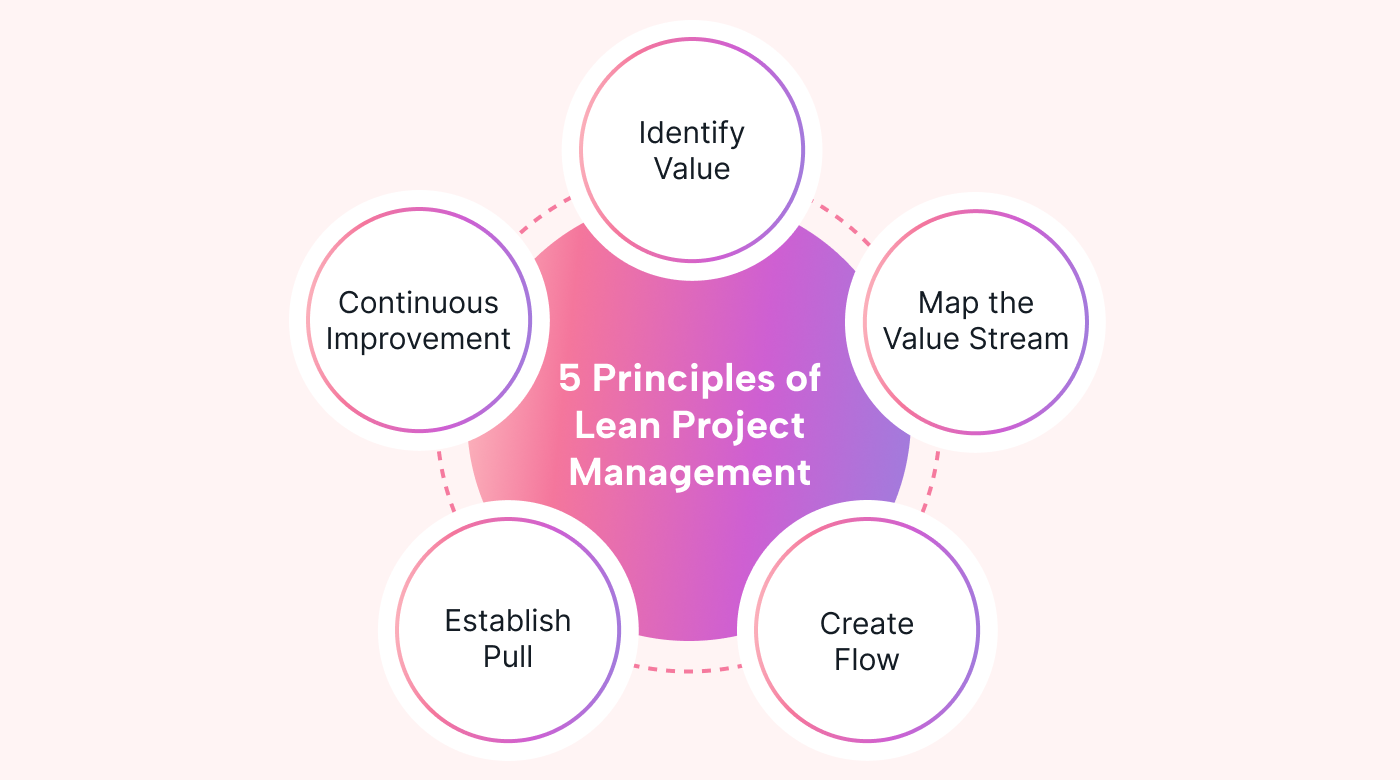 |
The goal is to deliver higher quality products or services to customers while minimizing waste of time, resources, and effort. Lean principles can be applied to various industries beyond manufacturing, including healthcare, services, and software development.
Six Sigma
Six Sigma is a method used to improve quality and reduce mistakes in processes. It focuses on finding and fixing problems to make things better.
It follows a structured approach called DMAIC: Define, Measure, Analyze, Improve, and Control.
First, you define the problem. Then, you gather data and measure what's happening.
Next, you analyze the data to find out why things are going wrong.
After that, you make improvements to fix the problem. Finally, you put controls in place to make sure the improvements stick. Six Sigma is used in many industries to make processes better and make customers happier.
A Six Sigma project usually follows a project charter with these steps:
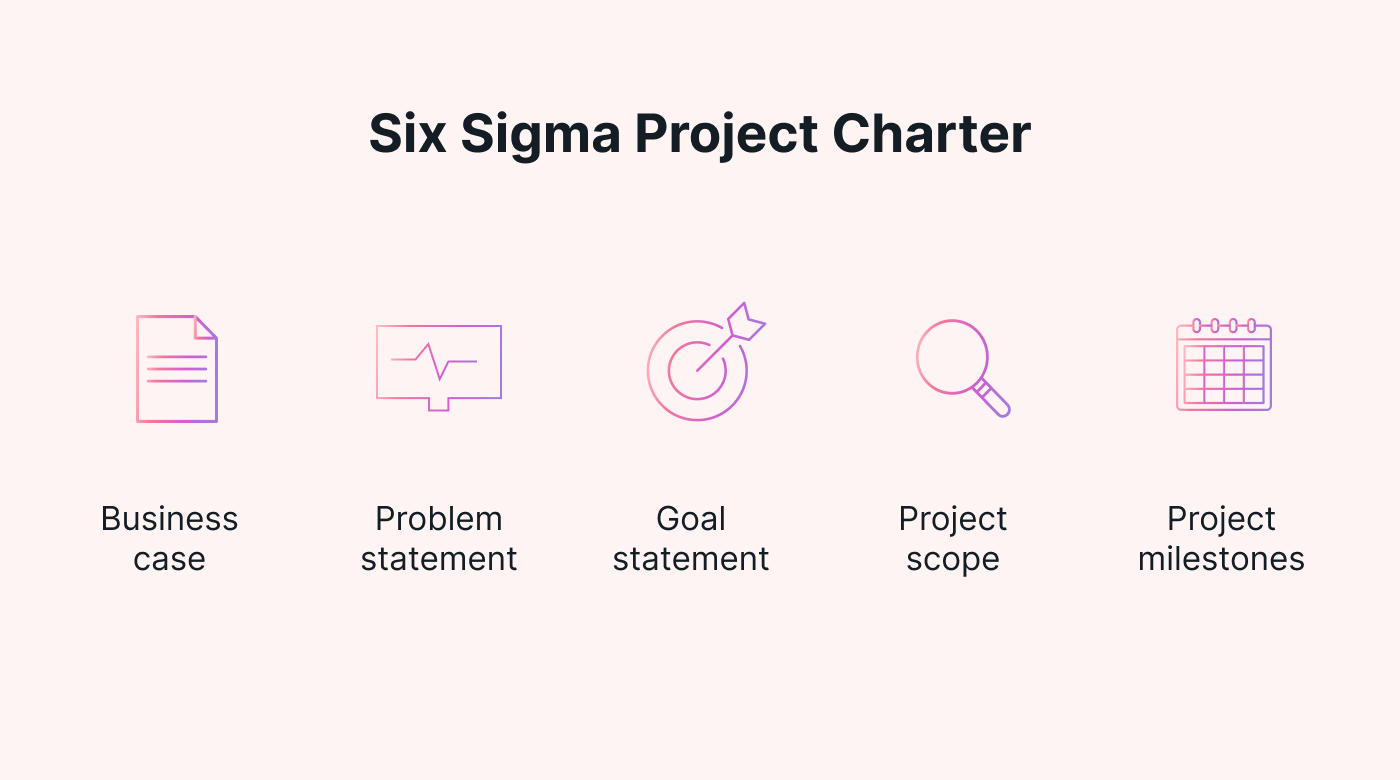 |
Six Sigma is a valuable tool for businesses aiming to reduce errors, address customer concerns, boost customer satisfaction, and streamline processes.
Critical path method (CPM)
While the critical path method (CPM) isn’t always considered a project management methodology, it is a valuable tool that helps schedule and control tasks. CPM identifies important activities and their order. The critical path shows tasks that, if delayed, delay the whole project.
CPM uses estimates and dependencies to make a timeline. It helps track progress and manage resources.
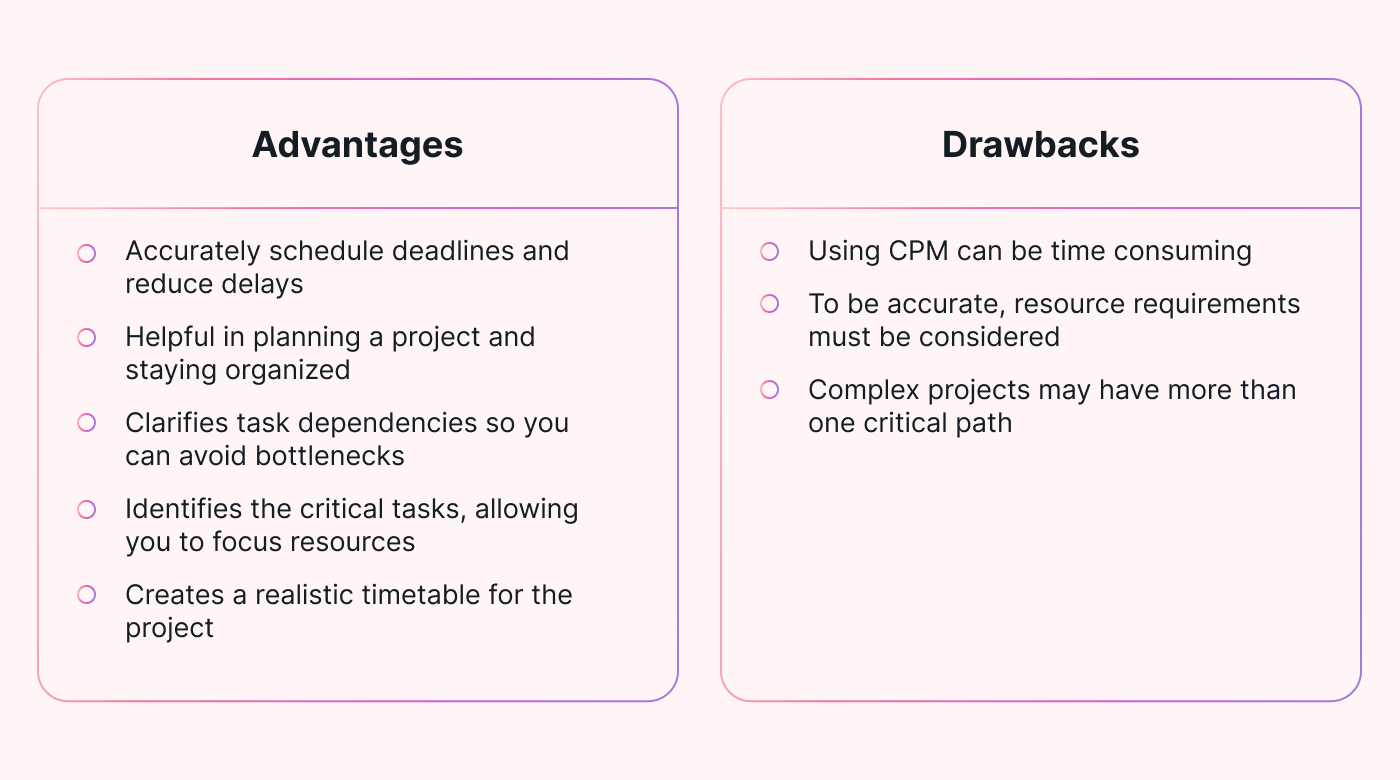 |
By focusing on the critical path, CPM ensures projects finish on time. It's often used in construction and engineering, and other industries where timing is important.
PRINCE2
PRINCE2 stands for "Projects in Controlled Environments." PRINCE2's unique features include its emphasis on business case justification, stage-based approach, defined roles and responsibilities, flexibility, and focus on continuous learning and improvement.
In PRINCE2, projects are divided into stages called processes. Each process has clearly defined tasks.
Important distinguishing characteristics of PRINCE2
What sets PRINCE2 apart from other types of project management?
PRINCE2 has:
- A project board: that makes decisions throughout, made up of the customer (or internal executive), senior user, and senior supplier management.
- A dedicated business case owner: The customer executive or if internal, internal executive, owns the business case and has the final word on the project board.
- Well-defined stages: For each stage, the stage progress is reviewed. It is determined whether the business case is still valid in order to move the project to the next stage. If not, the project will likely end. There is focus on benefit realization throughout.
PRINCE2 focuses on planning, monitoring, and adapting to changes. It is less about what, and more about how to perform project communication, risk management, and quality control. Used in many industries worldwide, PRINCE2 is most popular in Europe. It gives teams a common way to work together for successful outcomes and is celebrated for its beginner-friendly step-by-step process.
Motion and project management: your software partner in business
Choosing and using the right project management methodology for your business can seem overwhelming, especially when you’re already busy with other projects. But don’t worry; there are simple steps you can take to make things better.
One way is to start small and make improvements gradually. Try using an Agile approach, which means taking things step by step and trying new ideas one at a time. This way, you can make changes without causing too much disruption.
It’s also helpful to have someone on your team who can be a champion for the new approach. This person can lead the way, teach others about the new method, and provide support.
Using technology can make things even easier. You can use an AI-powered project management software like Motion. It can help with tasks like organizing information, keeping track of progress, and making communication smoother.
It can serve up tasks to your team considering priority, deadlines and other work. This way, you and your team can focus on doing your best work.
By making these small improvements and using the right tools, you can adapt to changes, do better projects, and improve customer satisfaction.
Take a step forward and try Motion for free today. It's the first step towards better project management.

